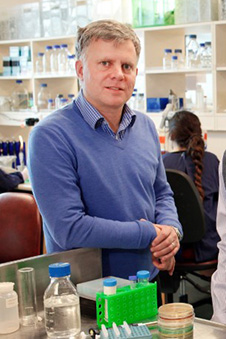Friday 13 March 2020 4:17pm
China, Taiwan and other Asian countries have shown that a massive public health response to COVID-19 works. Now is the time for New Zealand to do the same.
COVID-19 presents an unprecedented challenge for New Zealand and the rest of the world.
Unchecked, the coronavirus causing this disease spreads easily through populations, killing a worryingly high proportion of infected elderly and those with serious underlying medical conditions, and rarely others in the general population. This has led to lockdowns of whole regions within countries, in China and now in Italy. However, New Zealand doesn’t need to have thousands of deaths or lockdowns from COVID-19.

Professor Philip Hill
National pandemic plans tend to read like a fighter going into a fight planning to be knocked out. This is because they are based on influenza, which is extremely hard to contain due to its short 1-2 day incubation period and the large number of asymptomatic Influenza A virus shedders.
An influenza epidemic does not respond particularly well to basic public health measures. But the coronavirus that causes COVID-19 is not an influenza virus. While China was the first country to encounter this virus, it has also provided us with the answers to containing it, not so much in the lockdown of Wuhan, but in the response across the rest of the country.
China mounted a massive, sophisticated countrywide public health assault on the virus. Dr Bruce Aylward from the World Health Organization described this as 90 per cent comprising painstaking identification of cases and isolation of their contacts, tailor-making their response using big data, well-managed staff and by observing the local context of each mini-outbreak.
The results have been remarkable. Despite people from Wuhan in the height of the epidemic travelling all over the country, they have managed to minimise the impact of the virus. Indeed, outside of Wuhan and Hubei province, there have only been 13,152 cases and 114 deaths from COVID-19 reported in a country of around 1.4 billion people, as of March 8. If our public health efforts, which are faced with less complicated incursions of the virus, achieved the equivalent, we would end up with only a handful of cases and no deaths.
China’s experience is not unique. Taiwan is a country of 23 million people nearly 130km off the coast of mainland China. Over 400,000 of its citizens work in China, and Taiwan receives more than 2.5 million Chinese visitors a year. On December 31, 2019, in response to COVID-19, Taiwan rapidly responded to reports of cases from Wuhan, and over less than a week began to mobilise and institute case identification, containment, and resource allocation.
In addition to basic border controls, it applied a big data analytical approach that included real-time alerts, online reporting of risk information (including detailed travel history) and symptoms. Those deemed to be at high risk (recent travel to level 3 alert areas) were quarantined at home and tracked through their mobile phone to ensure that they remained at home during the incubation period.
Cases were actively identified and their contacts monitored. The government addressed the issue of disease stigma and compassion for those affected by providing food, frequent health checks, and encouragement for those under quarantine. As a result, Taiwan has reported fewer than 50 cases of COVID-19. The republic of Korea has managed to reverse an initially rapidly expanding outbreak leading to over 7000 cases, and now the number of new cases is rapidly declining. Singapore also seems to have brought a smaller outbreak under control, as has Japan.
Aylward has said that one of the reasons the WHO was reluctant to call this a COVID-19 pandemic is that it doesn’t need to be – countries do not need to have uncontrolled transmission if they apply high-quality public health measures. COVID-19 requires a different approach than the one to influenza. Our isolation and our response so far may have bought us time, but that time is running out.
The Ministry of Health and its director-general Dr Ashley Bloomfield have stated they are looking closely at the Taiwanese and other responses to COVID-19. This should be applauded. To be successful, New Zealand would require a huge investment in the public health response. If we do this, we will protect our most vulnerable from this dangerous pathogen and our economy will not need to be damaged further, or rescued.
China, Taiwan and other Asian countries have shown that a massive public health response to COVID-19 works, and now is the time for New Zealand to do the same.
Likely core components of a successful public health response to Covid-19, based on successful Asian approaches:
- A case-finding strategy to maximise the sensitivity of the criteria for testing for disease, with high testing capacity.
- Rapid case contact tracing and isolation, including a large and enabled workforce.
- Enhanced activities at the border with individual person risk-based assessment focused on the virus, more than on country-specific bans.
- Utilisation of modern technologies to enhance case finding and contact management, including mapping, ethical risk profiling, electronic communication with cases and contacts and the general population.
- Active engagement of cases and contacts with respect to the psychological effects of case contact management systems and stigma.
- Investment in face masks and other general personal measures while providing clear guidance on their use.
- Clear criteria for closure of institutions and for what period.
- Continue investment in businesses and other institutions affected by the measures taken.
- Massive influenza vaccine campaign to reduce the incidence of flu symptoms and unnecessary Covid-19 testing.
An editorial written by Professor Philip Hill, co-director at the Centre for International Health, Department of Preventive and Social Medicine at the Otago Medical School
